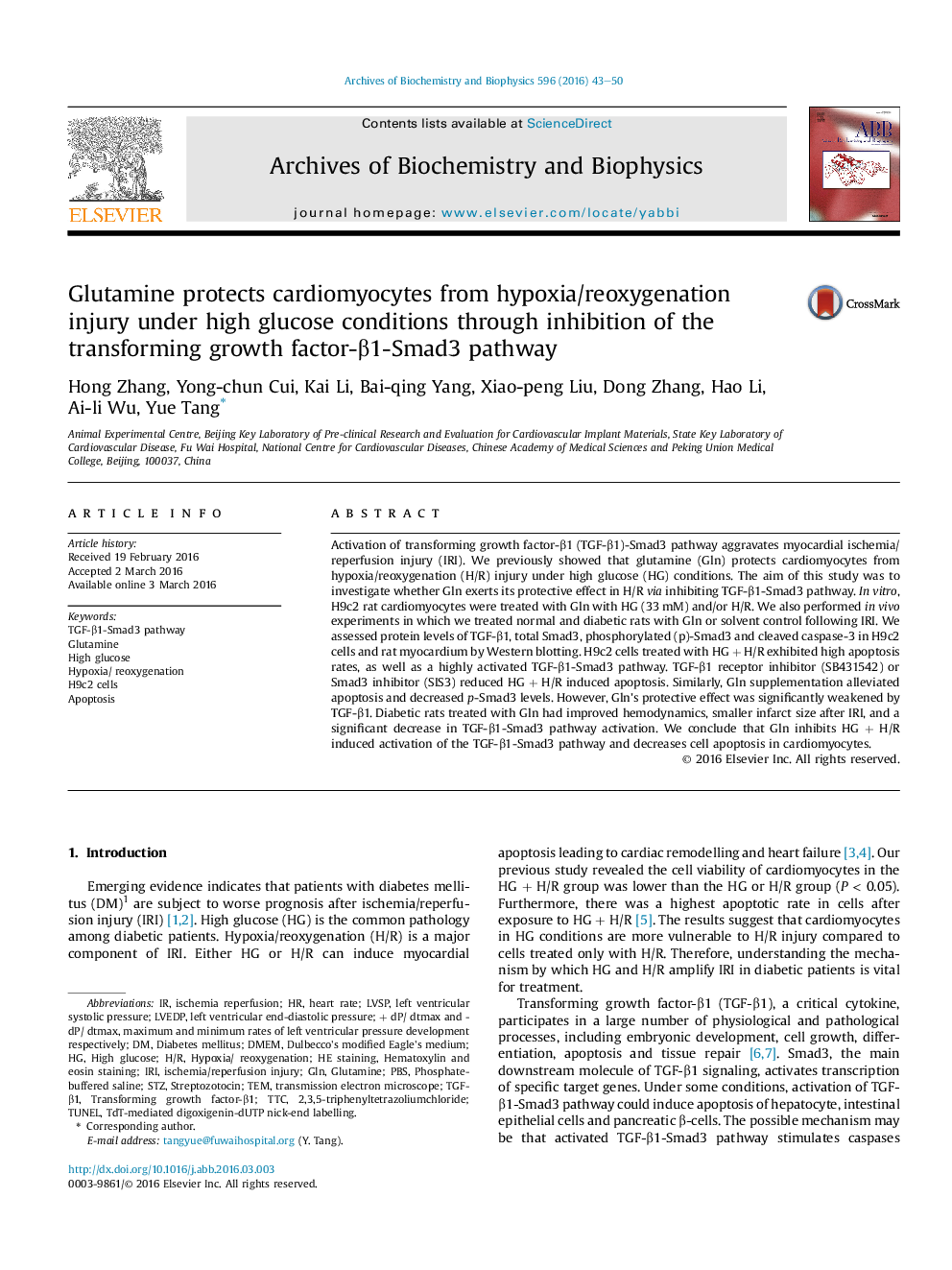| Article ID | Journal | Published Year | Pages | File Type |
|---|---|---|---|---|
| 1924769 | Archives of Biochemistry and Biophysics | 2016 | 8 Pages |
•Activation of TGF-β1-Smad3 pathway aggravates myocardial apoptosis under high glucose + hypoxia/reoxygenation conditions.•Hypoxia/reoxygenation can amplify activation of TGF-β1-Smad3 pathway in cardiomyocytes under high glucose conditions.•Glutamine protects cardiomyocytes from high glucose + hypoxia/reoxygenation injury by inhibiting TGF-β1-Smad3 pathway.
Activation of transforming growth factor-β1 (TGF-β1)-Smad3 pathway aggravates myocardial ischemia/reperfusion injury (IRI). We previously showed that glutamine (Gln) protects cardiomyocytes from hypoxia/reoxygenation (H/R) injury under high glucose (HG) conditions. The aim of this study was to investigate whether Gln exerts its protective effect in H/R via inhibiting TGF-β1-Smad3 pathway. In vitro, H9c2 rat cardiomyocytes were treated with Gln with HG (33 mM) and/or H/R. We also performed in vivo experiments in which we treated normal and diabetic rats with Gln or solvent control following IRI. We assessed protein levels of TGF-β1, total Smad3, phosphorylated (p)-Smad3 and cleaved caspase-3 in H9c2 cells and rat myocardium by Western blotting. H9c2 cells treated with HG + H/R exhibited high apoptosis rates, as well as a highly activated TGF-β1-Smad3 pathway. TGF-β1 receptor inhibitor (SB431542) or Smad3 inhibitor (SIS3) reduced HG + H/R induced apoptosis. Similarly, Gln supplementation alleviated apoptosis and decreased p-Smad3 levels. However, Gln's protective effect was significantly weakened by TGF-β1. Diabetic rats treated with Gln had improved hemodynamics, smaller infarct size after IRI, and a significant decrease in TGF-β1-Smad3 pathway activation. We conclude that Gln inhibits HG + H/R induced activation of the TGF-β1-Smad3 pathway and decreases cell apoptosis in cardiomyocytes.
